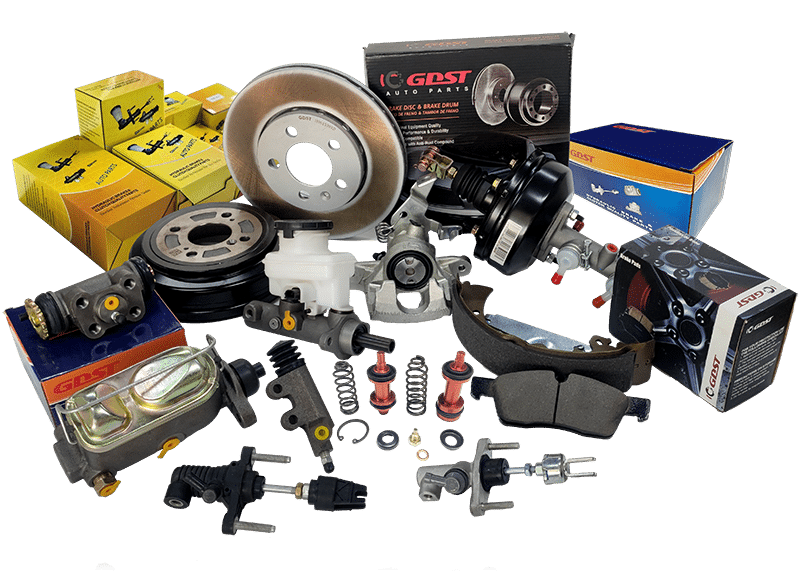What enables you to slow down and stop smoothly? This is thanks to the coordination of the entire brake system.
As one of the most easily worn parts in the brake system, the brake pad’s condition directly affects the braking performance.
Therefore, we should regularly check the wear of brake pads and replace damaged or excessively worn brake pads on time, which not only prevents traffic accidents and ensures safety, but also extends the service life of the braking system and reduces maintenance costs.
This article will guide you to understand how to check the brake pads properly and ensure that your car is always in the best braking condition.
How To Check Brake Pads?
1. Checking brake pad thickness
Standard thickness
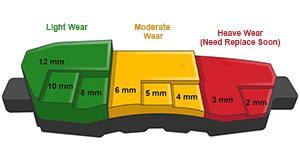
The standard thickness of brake pads is usually more than 10 mm, but the exact thickness may vary depending on the vehicle manufacturer.
When the brake pad thickness is less than 3mm, they must be replaced in time, otherwise the braking performance will be affected, and even cause a safety hazard.
How to measure the thickness?
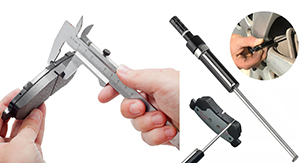
We can roughly see the thickness of the brake pads through the gap in the wheel hub.
If you can’t see it well, you can remove the brake pads and use a vernier caliper to measure the thinnest part of the brake pads.
2. Observing brake pad wear
Uneven wear

Normally, brake pads wear evenly, if you find that one side wears heavily while the other side is relatively better, this could be due to a faulty brake caliper or an uneven brake disc.
At this point, we need to check if the brake calipers are in normal working condition and have the brake pads tested and repaired.
Wear indicators

Many brake pads come with a wear indicator. When the brake pads reach a certain level of wear, you can see an indicator light up on your dashboard.
As shown in the picture above, it is usually red or yellow. At this point, the brake pads need to be replaced promptly.
3. Checking the condition of the brake disc
Scratches and dents

Regularly, the brake disc surface should be smooth and even.
If you find noticeable scratches or dents on the brake disc, this is because of wear of the brake pads or entry of foreign objects.
This condition will affect the braking effect and we recommend that you polish or replace the brake disc.
Signs of hot spots

Frequent hard braking or prolonged braking will cause the brake disc to overheat and form hot spots.
Hot spots will cause the surface of the brake disc to become uneven, affecting braking performance.
If blue or discolored spots are found on the brake disc, replacement of the brake disc should be considered.
4. Checking by listening
Abnormal noises (e.g. squealing, grinding)
When a vehicle makes an unusual screeching or harsh grinding noise during operation, this often signals a potential problem with the brake system.
In particular, when brake pads are nearing the end of their service life due to long-term wear or quality problems, direct metal-to-metal contact can exacerbate this noise.
It is therefore important to pay close attention and have them professionally inspected immediately.
Sound sources and possible causes
The noise is usually caused by abnormal contact between the brake pads and the brake disc.
Possible causes are brake pads worn to the limit, damaged discs, or intrusion of foreign objects.
Brake Pads Common Problems and Solutions
QA1: Brake pads uneven wear
Uneven brake pad wear may be due to brake caliper failure and uneven brake discs:
1. Faulty brake caliper
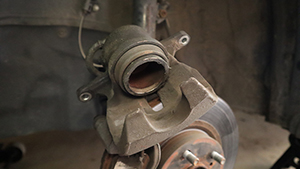
A faulty brake caliper can lead to uneven brake pad wear.
The calipers, including the rails, pistons, and seals, need to be inspected for sticking, wear, or corrosion.
Minor problems can be cleaned and lubricated, while serious problems will require new calipers to ensure the brakes are working properly.
2. Uneven brake discs
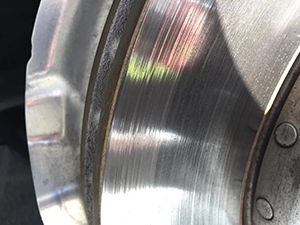
Uneven brake discs may be caused by long-term use or bad driving habits, showing wear marks and hot spots, which aggravate brake pad wear and affect brake performance.
It is necessary to check with professional tools. Slight unevenness can be repaired by attempting to sand, but serious damage requires replacement with new discs to ensure a stable and safe braking system.
QA2: Premature brake pad wear
There are two main reasons for premature wear of brake pads:
1. Unhealthy driving habits

Such as frequent sharp braking, prolonged continuous braking, and overloaded driving will accelerate the wear of brake pads and affect the brake system.
It is crucial to develop good habits:
- avoid sharp braking, anticipate road conditions, and decelerate smoothly;
- utilize engine braking when driving long distances or downhill;
- maintain a reasonable speed and braking frequency to enhance the driving safety and durability of the braking system.
2. Poor-quality brake pads

Brake pads of different quality, low-quality products with cheap materials, easy to wear, noisy, affecting driving safety.
We suggest you buy well-known brands of high-quality brake pads, wear-resistant and high-temperature resistant, stable braking performance, and shorten the braking distance, to protect driving safety.
QA3: Brake pad noise
There are many reasons for brake pad noise, and we’ll focus on two common ones below:
1. Badly worn brake pads

Brake pads wear out over time, and when they are badly worn, the contact surface is reduced and direct friction between the metals produces a harsh sound.
Regularly check the wear situation, when you see the wear indicator line or the thickness is insufficient, and timely replace high-quality brake pads to ensure the braking effect and reduce the noise.
2. Improper brake pad installation
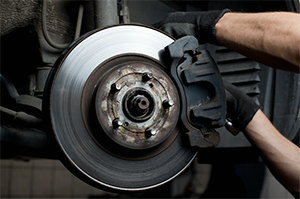
When installing brake pads, irregularities such as inaccurate position and untightened screws can cause vibration and noise.
In addition, the loosening of fixed parts after long-term use can also aggravate noise.
When replacing them, follow the vehicle manufacturer’s specifications to ensure proper installation and tightening.
We recommend you check the tightness of the brake pads periodically to prevent loosening.
Conclusion
We hope this article has helped you understand how to check your brake pads and ensure your safety on the road.
Please feel free to reach out if you have any questions or need further assistance.




